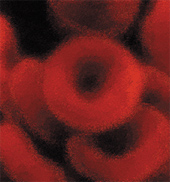Imaging in vascular disease
This research area is concerned with developing generic signal and chemical based biomarkers of circulatory and end-organ function in human health and disease.
Imaging in Vascular Disease - Microvascular MRI (Biomarkers) led by Professor Alan Jackson.The characteristics of tumour tissue differ from those of normal tissue in several ways that can be evaluated by imaging. In terms of blood vessels, tumours usually have a high density of small blood vessels which are essential for supplying the nutrients required for tumour growth, proliferation and spread. In addition, this microvasculature is often abnormal showing a lack of organisational structure and immature development. These abnormalities result in altered blood flow, blood volume and permeability of cells lining the vessel walls � all of which can be detected by appropriate imaging techniques. Imaging can also be used as biomarker of response to therapy by detecting and monitoring normalisation of abnormal microvasculature as a result of treatment.
Summary of current active research
The research of the group focuses on developing biomarkers of circulatory and target organ function in healthy and diseased tissue, with the objective to optimise the use of modern clinical imaging systems for diagnosis, classification and therapeutic planning in patients with malignancy or other diseases of the head and neck.
The group is also involved in research related to the use of Magnetic Resonance Imaging (MRI � which uses magnetic fields and radiofrequency pulses to provide detailed images of structures and tissues in the body) in cancer drug development. MRI is able to differentiate between the different soft tissues of the body and is therefore especially useful in brain, cancer and cardiovascular imaging. Dynamic contrast enhanced (DCE)-MRI uses intravenously injected contrast material to make specific organs, blood vessels, or tumours easier to visualise.
Research by the Imaging in Vascular Disease Group to refine methods of image analysis, and in particular analysis of DCE-MRI images, has led to the development of ICR-DICE (Improved Coverage and spatial Resolution � using Dual Injection for DCE-MRI), a new technique that overcomes spatial and temporal resolution limits as well as limitations in volume coverage. ICR-DICE provides high spatial resolution, 3-dimensional pharmacokinetic maps with whole brain coverage and greater parameter accuracy than possible with conventional methods. Ongoing work aims to further enhance ICR-DICE so it can be used as an effective clinical tool and in the development of future drug treatments.
Major areas of clinical research interest include the study of neurodegenerative diseases and dementia in the elderly, microvascular brain disease, neuro-oncology and angiogenesis (development of new blood vessels) in tumours. The group has recently shown that DCE-MRI biomarkers of tumour heterogeneity can predict metastasis shrinkage following anti-angiogenic therapy with Bevacizumab in combination with chemotherapy in patients with metastatic colorectal cancer that has spread to the liver.
The Imaging in Vascular Disease - Microvascular MRI (Biomarkers) Group is part of the Wolfson Molecular Imaging Centre (WMIC) and the Institute of Population Health.
